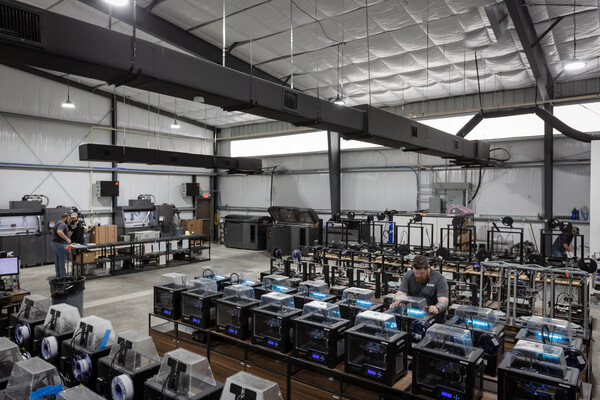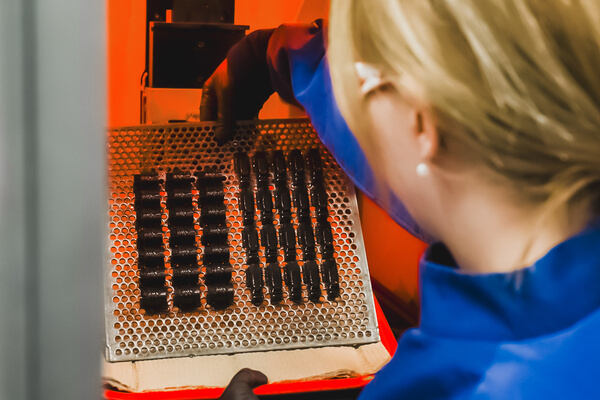What is Bridge Production?
Go-to-market faster and keep initial production costs low.

Moving from prototyping to production is a huge step for most companies. It requires both tangible and financial commitments to a product and a readiness to go-to-market. Bridge production, or bridge manufacturing, is an important step during the product development lifecycle that allows you to test out critical parts before committing to production quantities.
Just as important, bridge production is valuable in emergency situations such as when your primary supply chain is disrupted. In those situations, it's all about thoughtful planning to incorporate this important step.
Benefits of Bridge Production
To borrow a familiar software analogy, if prototyping equates to producing something like an alpha or beta candidate of a part, then one application of bridge production is all about producing a close-to-final iteration.
These pre-production parts are almost ready for product signoff or public usage, but possibly need additional tweaks and refinements as the final prototype is introduced to internal and/or external customers. With any final issues worked out, you can move to mass production quantities with a higher degree of confidence, often seamlessly when working with the same manufacturer. Bridge production is equally appropriate when trialing or transitional between different models of a product.
Another application is in scenarios with unpredictable demand. Bridge production allows you to get parts in whatever quantities you need to keep things rolling.
Ultimately, bridge production saves you time and money. Plus, it eliminates the need to inventory unneeded quantities of parts should you discover that a particular iteration requires adjustment. As just-in-time delivery becomes more important to businesses, bridge production can reduce risk and help fulfill orders on demand.

Bridge Production Capabilities
There are several use cases for which bridge production is a great solution. In one, you can take advantage of 3D printing to test and validate parts that are likely to be injection-molded in the future. This solution is best for evaluating fit and functionality, and sometimes even finish. It’s also a great way to get parts while waiting for your mass volume vendor to ramp up production.
Another scenario is using a bridge producer as a backup supplier for molded parts in the event of line-down or other supply emergencies. Protolabs’ rapid injection molding solution—which mills your mold from aluminum—offers massive time and money savings over traditional steel tooling. While aluminum molds have a shorter life than steel, they can easily provide enough parts to accomplish multiple rounds of bridge production. The agility is often a vital benefit before transitioning to a large-volume injection molding production option.
Here are a few use cases and real-life examples revealing the advantages of using bridge production within common manufacturing services.
3D Printing
There are seemingly endless reasons why 3D printing is a great match in these situations. Some of these are obvious:
- You can get rolling on producing components with a much faster timeline.
- Even with the complex designs often associated with 3D printing, you can tweak your CAD models quickly and submit your new iteration for printing.
- If you have a sudden spike in demand or your molding tool is somehow unavailable—turn to 3D printing to bridge these issues.
Sometimes, we 3D print plastic pre-production components for customers as a bridge to the goal of using injection molding. “This allows the customer to push NRE (non-recurring engineering) costs farther down the road,” said Protolabs 3D Printing Product Sales Leader Matt Wingard. “Even more strategically, you may not have to commit to added NRE costs at all if demand is lower than expected.”
Much of the above applies to metals, too. Note that often 3D printing is used exclusively to iterate, avoiding the time and expense associated with tooling for molding.
Last, but not least, 3D printing bridge manufacturing can help you when a product is nearing end-of-life and you’re starting to phase out production. Ordering smaller quantities avoids excess inventory.
CNC Machining
Sometimes bridge production can be used to remedy a major emergency in-house or when your production manufacturer has an issue. Quick-turn, CNC machining offers a vital solution when real-world issues occur.
“Once, a company’s magnesium die caster had a fire, so they needed a fast, yet capable solution to keep their production running,” said Chris Gottlieb, Protolabs CNC machining global product director. Another customer filled a development gap until their intended full-volume vendor’s line could get qualified. The aim, as always, was to maintain development schedules and projected revenue targets.
Injection Molding
Here’s a scenario: You’re almost ready to move to production, but traditional molders tend to set minimum order quantities (MOQs) before you can work with them. You don’t want tens of thousands of a particular part in inventory early in your product’s lifecycle. That’s a solid reason to use more flexible bridge production. Towards the end of the product lifecycle, it offers a viable solution when demand wanes and paying $50,000-$100,000 for a traditional production tool seems financially risky.
“The same sensibility can be applied to validation testing,” said Dan Snetselaar, Protolabs product sales leader. “When you take a prototype-to-production approach, bridge production can allow you to find potential design flaws or changes at a lower risk level.” This could help you avoid spending money on molds (or half-molds) that don’t do what you need them to do.
We’ve talked previously about supply chain disruptions being a good use case for bridge production. Now, what about the other side of coin? Sometimes you get demand spikes due to viral trends (gaze longingly at that fidget spinner in your drawer) or macro events such as COVID and you need parts yesterday. Bridge production can fill the gap until you can determine when to move to a traditional production tool and higher quantities.
Sheet Metal Fabrication
Imagine that you’ve invented an amazing new consumer device and you’re on a deadline to showcase a preliminary version for several trade shows. You have the electronics all worked out but must quickly fabricate the metal case and chassis. You know this won’t be the final iteration, but you just need enough cases to get through an initial reveal of your product’s capabilities at multiple venues.
Bridge production can quickly come to the rescue, providing those components quickly before you move on to the final production phase. You’ll get parts faster, less expensively, and risk is eliminated with a low volume run prior to full-scale production.

How to Make Bridge Production Work for You
Even if you’ve never tried it before, it’s logical to assume that working with one manufacturer throughout your product’s entire lifecycle makes sense. You gain consistency from stage to stage because learnings from one cycle can be transferred to inform the next.
Manufacturing partners like Protolabs with the capabilities needed to journey with you from prototyping to mass production—with a stop along the way for bridge production—ensures that issues that could crop up during that transition are either avoided or easily smoothed out. It also provides a fallback when supply issues crop up because you’re working with the company that has built those parts previously.
In the end, including a plan to use bridge production is something that should be baked into every product you produce. It can help rescue you in an emergency and can also be a sensible transitional phase during a typical product’s lifecycle.
Chris Gottlieb, Dan Snetselaar, Jamie White, Ben Wilson, and Matt Wingard contributed to this article.








